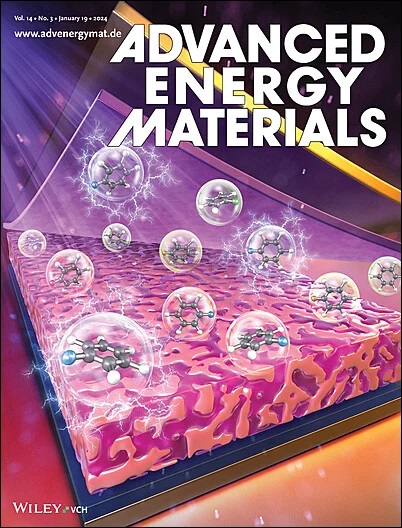Intrinsic Screening Descriptor for Organic Proton Donors to Enable Long Lifespan Aqueous Zinc||Polyaniline Batteries
IF 24.4
1区 材料科学
Q1 CHEMISTRY, PHYSICAL
引用次数: 0
Abstract
The incorporation of additives into aqueous electrolytes provides substantial opportunities to mitigate dendrite formation and side reactions on zinc anodes. However, there is a lack of an effective guideline for selecting suitable electrolyte additives based on critical performance-limiting factors. Herein, the use of the acid dissociation constant (pKa) as an intrinsic descriptor for screening suitable organic proton donors is proposed to achieve highly reversible Zn||polyaniline (PANI) batteries. Experimental results and theoretical calculations reveal that L-malic acid (L-MA) with a low pKa can supply constant protons to effectively reduce the accumulation of nonconductive alkaline byproducts and address the deprotonation issue of the PANI cathode. Meanwhile, the deprotonated malate anions form bidentate coordination with Zn2+, thereby reconfiguring a water-deficient solvation structure of hydrated Zn2+ and facilitating the formation of ZnCO3-rich solid electrolyte interphase. Taking L-MA as a demonstration, Zn||Zn symmetric cells can stably cycle for over 460 h at a high depth of discharge of 80%. Additionally, the L-MA additive enables Zn||PANI full cells to retain 89% capacity after 5000 cycles. The screening principle of organic proton-donors that can simultaneously stabilize Zn anode and cathode of aqueous batteries is highlighted here.

求助全文
约1分钟内获得全文
求助全文
来源期刊

Advanced Energy Materials
CHEMISTRY, PHYSICAL-ENERGY & FUELS
CiteScore
41.90
自引率
4.00%
发文量
889
审稿时长
1.4 months
期刊介绍:
Established in 2011, Advanced Energy Materials is an international, interdisciplinary, English-language journal that focuses on materials used in energy harvesting, conversion, and storage. It is regarded as a top-quality journal alongside Advanced Materials, Advanced Functional Materials, and Small.
With a 2022 Impact Factor of 27.8, Advanced Energy Materials is considered a prime source for the best energy-related research. The journal covers a wide range of topics in energy-related research, including organic and inorganic photovoltaics, batteries and supercapacitors, fuel cells, hydrogen generation and storage, thermoelectrics, water splitting and photocatalysis, solar fuels and thermosolar power, magnetocalorics, and piezoelectronics.
The readership of Advanced Energy Materials includes materials scientists, chemists, physicists, and engineers in both academia and industry. The journal is indexed in various databases and collections, such as Advanced Technologies & Aerospace Database, FIZ Karlsruhe, INSPEC (IET), Science Citation Index Expanded, Technology Collection, and Web of Science, among others.
 求助内容:
求助内容: 应助结果提醒方式:
应助结果提醒方式:


